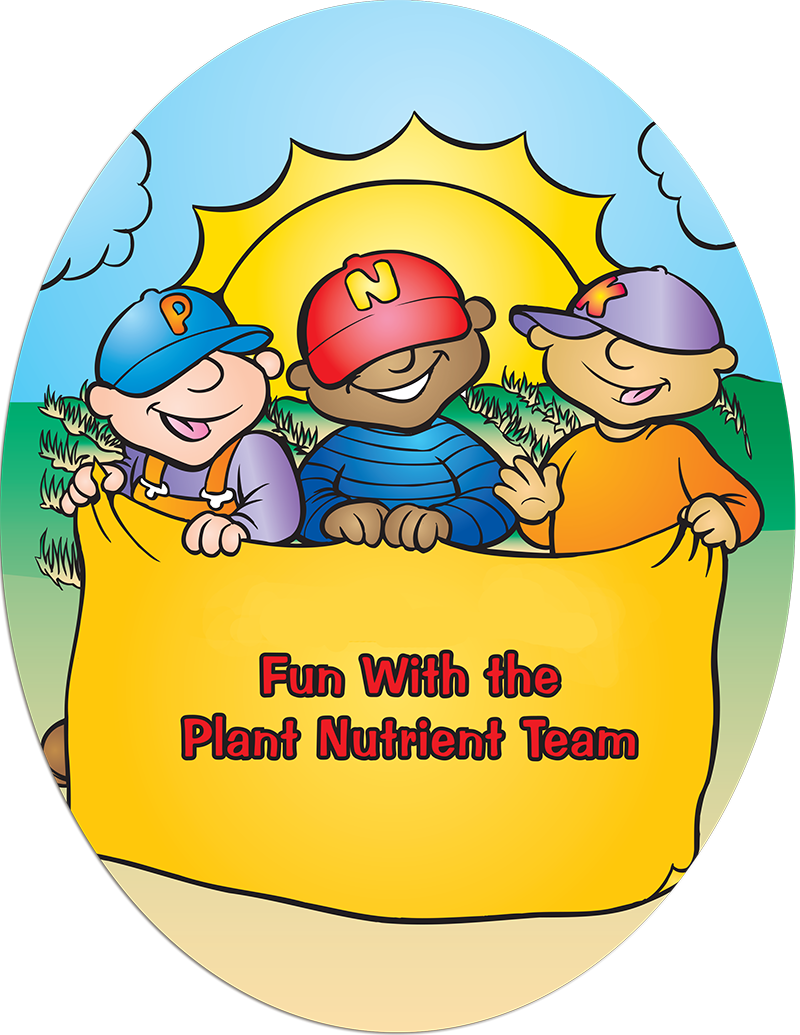Photosynthesis and You
Students identify the process used by plants to make their own food and discover how photosynthesis provides the food they eat.
Background
Lesson Activities
Recommended Companion Resources
Credits
Author
Shaney Emerson and Mary Pat Jones | California Foundation for Agriculture in the Classroom
Acknowledgements
The Educator’s Guide was funded by California Department of Food and Agriculture’s Fertilizer, Research, and Education Program (FREP) and developed by California Foundation for Agriculture in the Classroom.
Executive Director: Judy Culbertson
Illustrator: Erik Davison
Layout and Design: Nina Danner and Renee Thompson
Copy Editor: Leah Rosasco
Special Thanks to: Nutrients for Life Foundation, International Plant Nutrition Institute, Fertilizer Research and Education Program, and California Department of Food and Agriculture.
Standards
Texas Content Area Standards
-
ELA: K.110.2.b.1
Developing and sustaining foundational language skills: listening, speaking, discussion, and thinking - - oral language. The student develops oral language through listening, speaking, and discussion.
- ELA: K.110.2.b.1.C: share information and ideas by speaking audibly and clearly using the conventions of language
- ELA: K.110.2.b.1.D: work collaboratively with others by following agreed-upon rules for discussion, including taking turns;
-
ELA: 1.110.3.b.1
Developing and sustaining foundational language skills: listening, speaking, discussion, and thinking - - oral language. The student develops oral language through listening, speaking, and discussion.
- ELA: 1.110.3.b.1.C: share information and ideas about the topic under discussion, speaking clearly at an appropriate pace and using the conventions of language
- ELA: 1.110.3.b.1.D: work collaboratively with others by following agreed-upon rules for discussion, including listening to others, speaking when recognized, and making appropriate contributions
-
ELA: 2.110.4.b.1
Developing and sustaining foundational language skills: listening, speaking, discussion, and thinking -- oral language. The student develops oral language through listening, speaking, and discussion.
- ELA: 2.110.4.b.1.C: share information and ideas that focus on the topic under discussion, speaking clearly at an appropriate pace and using the conventions of language
- ELA: 2.110.4.b.1.D: work collaboratively with others by following agreed-upon rules for discussion, including listening to others, speaking when recognized, making appropriate contributions, and building on the ideas of others
-
Social Studies: 2.113.13.c.16
Social studies skills. The student communicates in written, oral, and visual forms. The student is expected to:
- Social Studies: 2.113.13.c.16.E: communicate information visually, orally, or in writing based on knowledge and experiences in social studies
-
Social Studies: K.113.11.c.14
Social studies skills. The student communicates in oral and visual forms. The student is expected to:
- Social Studies: K.113.11.c.14.C: communicate information visually, orally, or in writing based on knowledge and experiences in social studies
-
Social Studies: 1.113.12.c.17
Social studies skills. The student communicates in oral, visual, and written forms. The student is expected to:
- Social Studies: 1.113.12.c.17.C: communicate information visually, orally, or in writing based on knowledge and experiences in social studies
-
Science: 2.112.4.b.1
Scientific and engineering practices. The student asks questions, identifies problems, and plans and safely conducts classroom, laboratory, and field investigations to answer questions, explain phenomena, or design solutions using appropriate tools and models. The student is expected to:
- Science: 2.112.4.b.1.A: ask questions and define problems based on observations or information from text, phenomena, models, or investigations
- Science: 2.112.4.b.1.B: use scientific practices to plan and conduct simple descriptive investigations and use engineering practices to design solutions to problems
- Science: 2.112.4.b.1.E: collect observations and measurements as evidence
- Science: 2.112.4.b.1.F: record and organize data using pictures, numbers, words, symbols, and simple graphs
-
Science: K.112.2.b.1
Scientific and engineering practices. The student asks questions, identifies problems, and plans and safely conducts classroom, laboratory, and field investigations to answer questions, explain phenomena, or design solutions using appropriate tools and models. The student is expected to:
- Science: K.112.2.b.1.B: use scientific practices to plan and conduct simple descriptive investigations and use engineering practices to design solutions to problems.
- Science: K.112.2.b.1.E: collect observations and measurements as evidence.
- Science: K.112.2.b.1.F: record and organize data using pictures, numbers, words, symbols, and simple graphs.
-
Science: K.112.2.b.2
Scientific and engineering practices. The student analyzes and interprets data to derive meaning, identify features and patterns, and discover relationships or correlations to develop evidence-based arguments or evaluate designs. The student is expected to:
- Science: K.112.2.b.2.A: identify basic advantages and limitations of models such as their size, properties, and materials.
-
Science: K.112.2.b.12
Organisms and environments. The student knows that plants and animals depend on the environment to meet their basic needs for survival. The student is expected to:
- Science: K.112.2.b.12.A: observe and identify the dependence of plants on air, sunlight, water, nutrients in the soil, and space to grow.
-
Science: K.112.2.b.13
Organisms and environments. The student knows that organisms resemble their parents and have structures and undergo processes that help them interact and survive within their environments. The student is expected to:
- Science: K.112.2.b.13.A: identify the structures of plants, including roots, stems, leaves, flowers, and fruits.
-
Science: 1.112.3.b.1
Scientific and engineering practices. The student asks questions, identifies problems, and plans and safely conducts classroom, laboratory, and field investigations to answer questions, explain phenomena, or design solutions using appropriate tools and models. The student is expected to:
- Science: 1.112.3.b.1.B: use scientific practices to plan and conduct simple descriptive investigations and use engineering practices to design solutions to problems.
- Science: 1.112.3.b.1.E: collect observations and measurements as evidence.
- Science: 1.112.3.b.1.F: record and organize data using pictures, numbers, words, symbols, and simple graphs.
-
Science: 1.112.3.b.11
Earth and space. The student knows that earth materials and products made from these materials are important to everyday life. The student is expected to:
- Science: 1.112.3.b.11.A: identify and describe how plants, animals, and humans use rocks, soil, and water.
-
Science: 2.112.4.b.12
Organisms and environments. The student knows that living organisms have basic needs that must be met through interactions within their environment. The student is expected to:
- Science: 2.112.4.b.12.A: describe how the physical characteristics of environments, including the amount of rainfall, support plants and animals within an ecosystem
